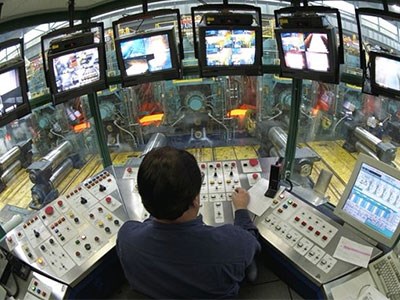After a lull, Essar Steel Algoma is once again in a hiring phase, with dozens of jobs up for grabs across the spectrum of work, including the company’s top job.
The position of chief executive officer is one of the vacancies being advertised by the Sault Ste. Marie-based steel manufacturer; metallurgists, an automotive technician, a machinist, and a hoisting engineer are among the others.
Attrition is being cited as the primary reason for the hiring spree.
Close to 500 employees have retired over the last two years, leaving Essar with a major gap in its cadre of 2,800 workers, said Brenda Stenta, Essar’s manager of corporate communications. “We’re not necessarily growing in terms of staffing, overall, but there’s been such a shift in the workforce demographics over the last five years,” Stenta said.
“Historically, in the steel industry, there were hiring cycles,” she added. “So the steel industry had really large periods of growth where there was a lot of hiring, and then it levelled off for almost about 10 years, where across North America there was a lot of consolidation and there wasn’t much in the way of hiring. And then there was growth again.”
During one of the last major hiring bubbles in the mid-1970s, Essar focused on bringing in mostly 20-somethings, which have remained at the company through the course of their careers.
That cohort has now reached retirement age.
“After 1990, there was really no hiring in this company, through to 2004,” said Jim Rennie, Essar’s vice-president of human resources. “So we’ve taken a lot of effort since 2004 that when we hire, we make sure that we hire across the spectrum of ages, so that we don’t recreate that bubble.”
That means hiring a mix of graduates fresh out of school who are familiar with the newest theories, and older workers nearing the ends of their careers, who bring experience and knowledge to the table, Rennie said.
Job postings typically see very healthy responses across the board, with the exception of the trades, where there continues to be a shortage, he added.
Essar started addressing that problem several years ago when it created its in-house apprenticeship program, which trains workers in up to nine different trades. The program currently boasts 49 people at various stages in their apprenticeships.
“It’s costly to do it that way, but if you can’t find (tradespeople), you have to grow them,” Stenta said. In many cases, workers hired into production roles have post-secondary education already, often in the trades, but never had the opportunity to complete their apprenticeship, she said. When an apprenticeship opportunity comes up, it’s posted internally and the company can usually fill it from within. Then Essar backfills the vacancies with new hires.
“They know when they join the company there are other opportunities available for them to grow professionally and to acquire new skills,” Stenta said. “It works well for us.”
Ideally, Essar prefers to hire from Northern Ontario, Rennie said, as Northern workers are familiar with the lifestyle, enjoy the climate, often have roots here, and like living in smaller communities.
“What we have found is if we recruit from Northern Ontario, our retention rate is much, much higher,” Rennie said. “If we recruit from southern Ontario, they tend to return to southern Ontario.”
In some cases, the successful applicant is a born-and-raised Northerner who moved away for work and is returning to raise a family.
Filling vacancies in more specialized areas, such as metallurgists, often requires Essar to look beyond the North to find properly qualified people.
In those cases, however, a succession plan is often in place. A worker is groomed to take over the position and that worker’s role is backfilled with a new hire.
Additional workers will be needed for an upcoming $108-million project rebuilding each of the four stoves attached to Essar’s blast furnace. The 40-year-old equipment is nearing the end of its life and must be replaced.
Essar is hiring a Chinese company with expertise in steel mill construction to rebuild the stoves on an engineering, procurement and construction (EPC) contract, Stenta said.
The operation of the blast furnace requires three stoves, so only one can be taken out of service at a time.
It takes one year to build a stove, so there promises to be at least four years of work for those tradespeople, in addition to a couple of years of work constructing throughwalls on the mill’s coke battery.
Stenta said the Chinese firm will be hiring about 50 tradespeople to undertake the work. The company will be setting up a Canadian office and launching an extensive recruiting campaign this fall.
“They have people they could bring with them, but ideally, we want to hire Canadians for those jobs,” Stenta said. “So they’ll be embarking on a campaign shortly to try to find those tradespeople.”
Stenta acknowledged that may be a challenge, and the company may have to look farther than Northern Ontario to fill those roles.
But workers know they’ll have work for at least four years, and could be presented with longer term opportunities after gaining that experience working on the project.




